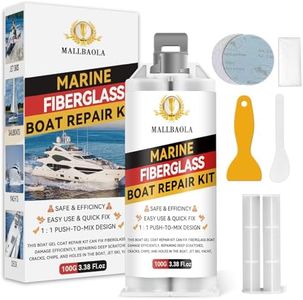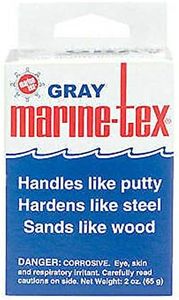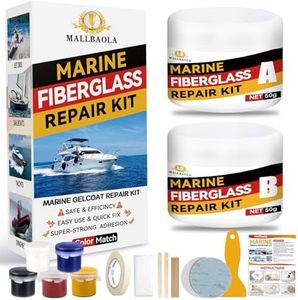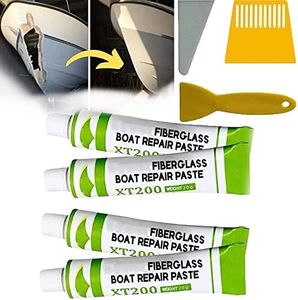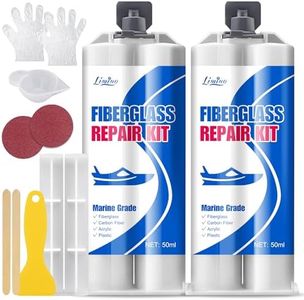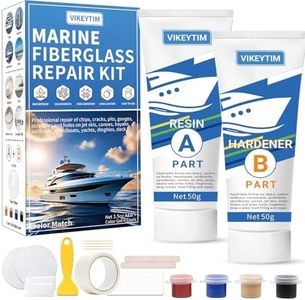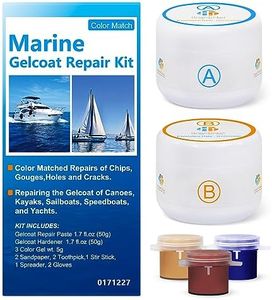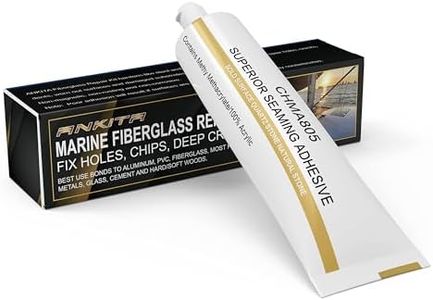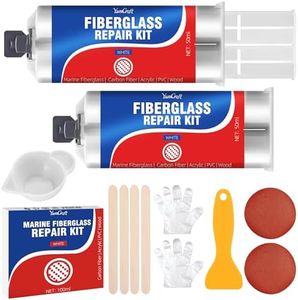We Use CookiesWe use cookies to enhance the security, performance,
functionality and for analytical and promotional activities. By continuing to browse this site you
are agreeing to our privacy policy
10 Best Boat Fiberglass Repair Kits
From leading brands and best sellers available on the web.Buying Guide for the Best Boat Fiberglass Repair Kits
When choosing a fiberglass repair kit for your boat, it's essential to make sure the kit matches your repair needs in terms of size, type of damage, and the environment where the repair will be applied. The right kit will provide durability, easy application, and a finish that restores your boat's original appearance and strength. Consider how severe the damage is and whether you need just a small patch or a solution for larger cracks and holes. Always make sure kit materials are compatible with marine use.Resin TypeThe resin is the main bonding agent in a fiberglass repair kit. The most common types for marine applications are polyester resin and epoxy resin. Polyester resin is widely used and tends to be less expensive but is less durable in harsh marine environments. Epoxy resin is more durable and provides a stronger bond, but can be a bit more challenging to work with. If you are repairing a structural area or a spot that is always underwater, epoxy is usually the better choice. For cosmetic or above-water repairs, polyester may be sufficient. Always make sure the resin is suitable for the size and location of your repair.
Fiberglass Cloth or MatThe cloth or mat is what adds structure and strength to your repair. Kits usually provide either chopped strand mat or woven cloth. Chopped strand mat is easier to shape and works well for filling irregular areas or layering for increased strength. Woven cloth is stronger and better for repairing flat or gently curved surfaces. If you are dealing with a visible area or want a smooth finish, woven cloth is preferable. For bulk repairs or when filling deeper voids, chopped strand mat is reliable.
Kit Size (Coverage Area)Kits come in different sizes, with coverage typically measured in square feet or by volume of resin offered. Small kits are for tiny cracks or chips, while larger kits can handle holes or cracks several inches across. Estimate the area you need to repair and choose a kit labeled for that much coverage. Using too small a kit may leave you short, while buying too large a kit can be wasteful and prone to resin or hardener going bad before it’s used up.
Curing TimeCuring time is how long the repaired area takes to fully harden. Some resins cure in an hour or two, while others may take a day or more. Faster-cure kits are helpful if you need to get your boat back in the water quickly, but slower-curing resins can allow more working time for careful repairs. If you’re new to repairs or working on a larger, more complex area, choose a slower-curing kit to give yourself more time to get the job right.
Ease of UseSome kits are designed for beginners and come with pre-measured amounts of the chemicals and tools like brushes, mixing cups, and gloves. Others might be more basic, intended for those who already have some supplies or experience. If you’re repairing fiberglass for the first time or don’t have your own tools, look for a kit that is labeled as ‘all-in-one’ or ‘easy-application.’ If you have experience and supplies, you can go for simpler, more economical kits.
Weather and Water ResistanceMarine environments are tough—sun, saltwater, and constant moisture can break down repairs quickly. Check that the kit is rated for marine use, specifying resistance to UV rays and water. Above-the-waterline repairs can be less demanding, but for constant water contact, strong resistance is crucial. Think about where on the boat you’ll use the kit, and make sure it can withstand those conditions.
